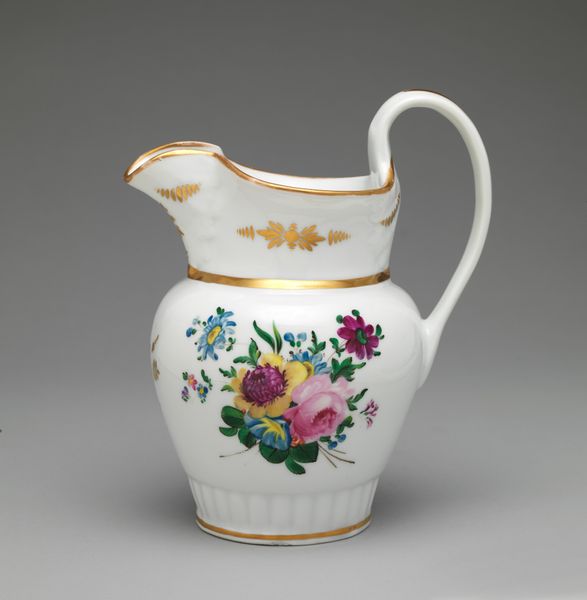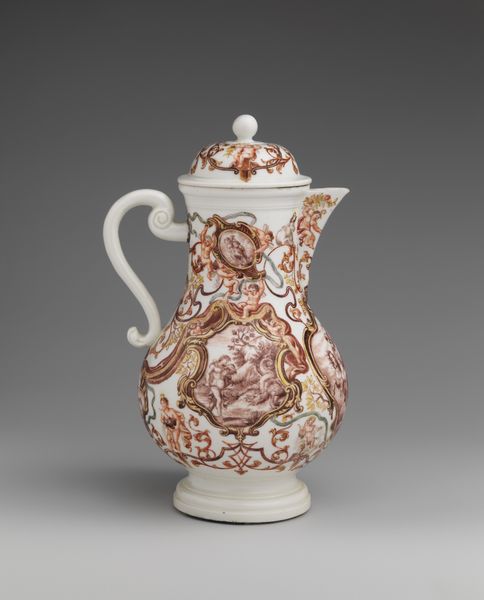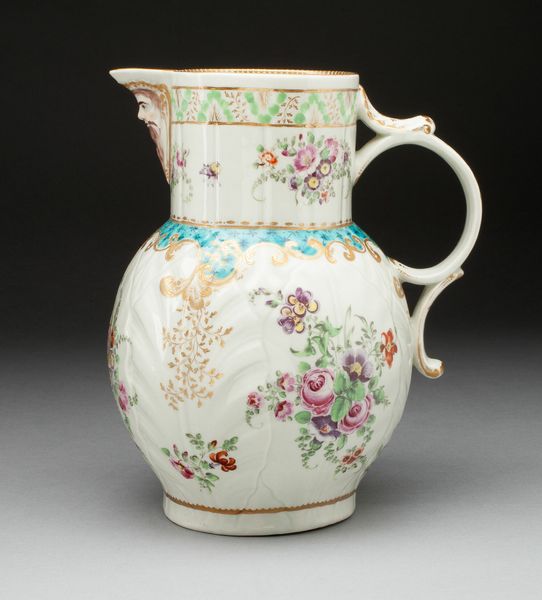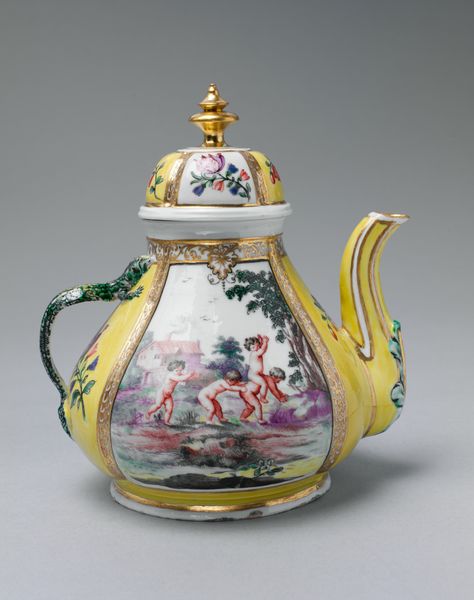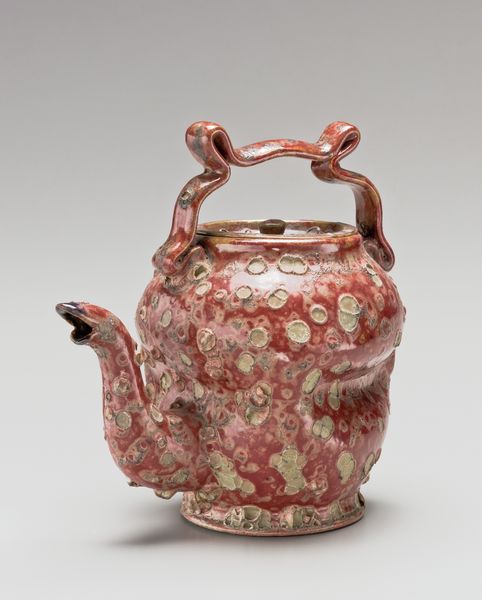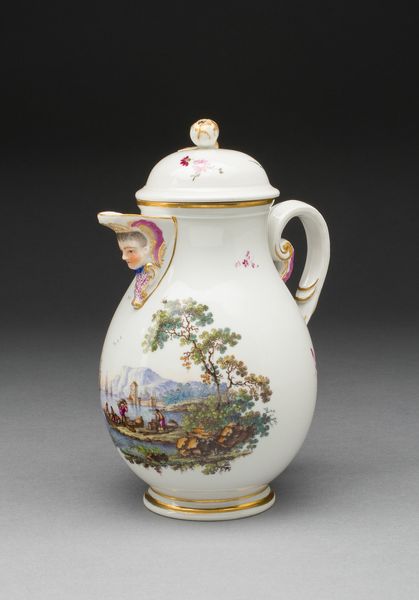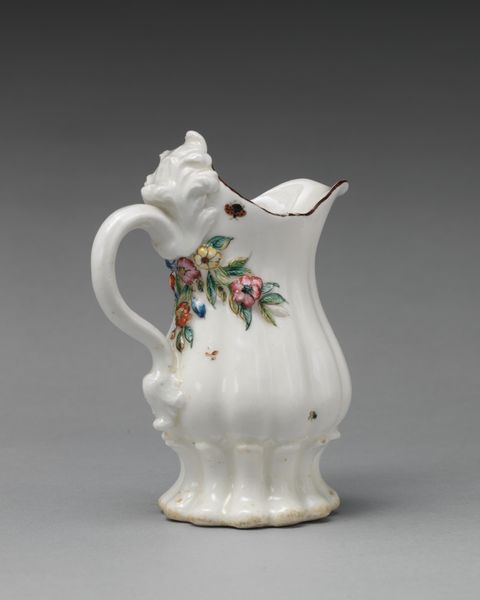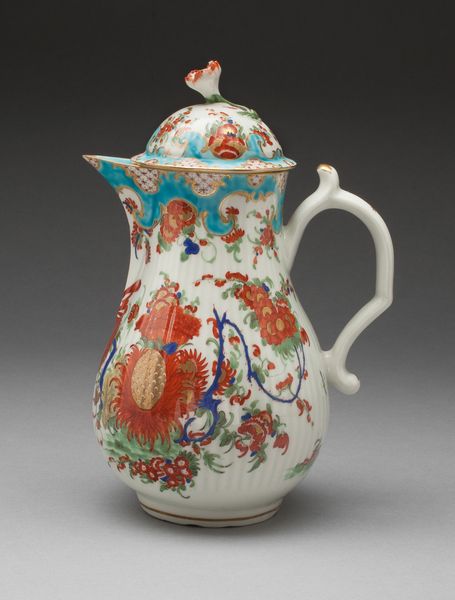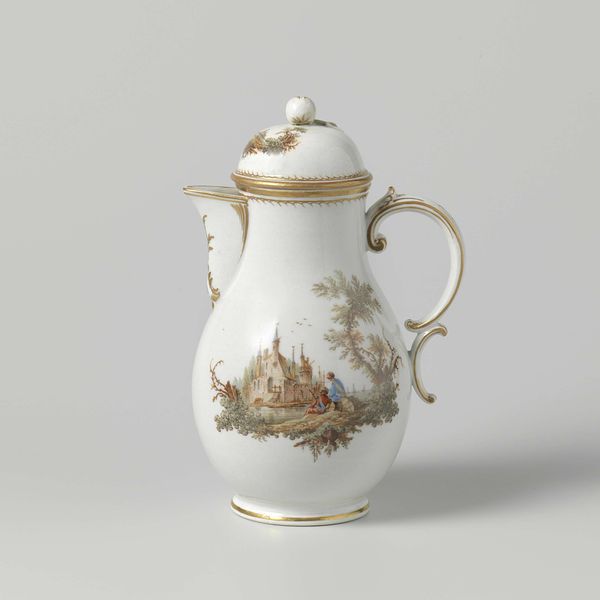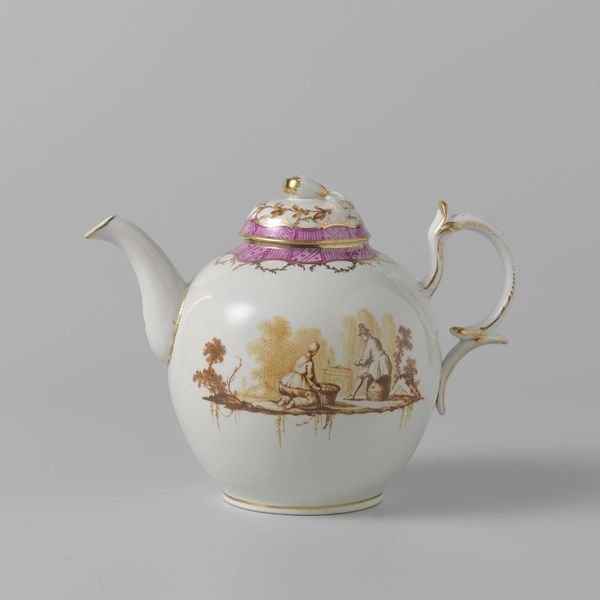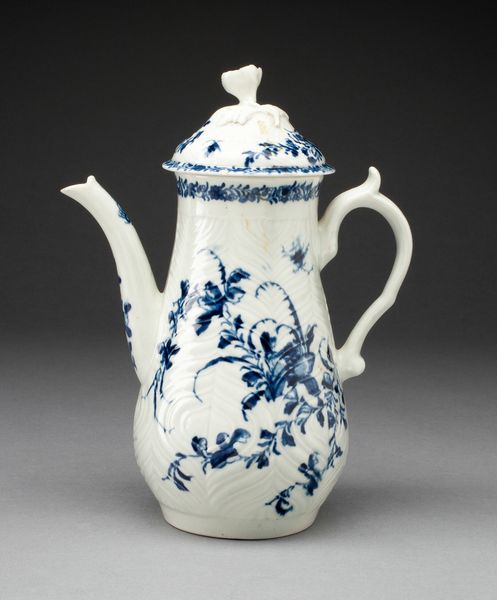
Coffeepot (part of a service) 1755 - 1765
0:00
0:00
ceramic, porcelain, sculpture
#
allegory
#
ceramic
#
porcelain
#
figuration
#
sculpture
#
ceramic
#
decorative-art
#
nude
#
rococo
Dimensions: Height: 10 1/2 in. (26.7 cm)
Copyright: Public Domain
Curator: Here we have a coffeepot from a larger service, crafted by the Doccia Porcelain Manufactory between 1755 and 1765. The elegant curves are Rococo in style, and it is currently housed at the Metropolitan Museum of Art. Editor: Wow, what strikes me first is how overtly sensual this object is. The figures appear to be in the midst of some bacchanalian revelry, smack dab on a piece intended for domestic use! The nudes contrast so boldly with the pristine, gilded porcelain. Curator: Indeed. Doccia was known for precisely that juxtaposition. Porcelain, often associated with luxury and courtly ritual, served as a ground for all manner of imagery that was very popular in aristocratic circles. The imagery depicts Bacchus's triumphant return. The incorporation of allegorical figures was meant to elevate and even intellectualize the simple act of drinking coffee. Editor: Right, it is as though pleasure becomes almost acceptable when framed with allegory. I wonder, how were objects like these deployed? This would've been during the Enlightenment – were these conversation pieces, designed to subtly flaunt status, spark discussion around philosophy, or simply serve a hot beverage? Curator: Most likely a mix of all of the above. The Doccia manufactory arose during a period of rising social fluidity, with objects like these meant to project one’s social position in very material terms, especially for those in new positions of power. The choice to embrace mythological subject matter signals an aspiration for "high" culture and sophistication. The coffeepot itself, like other decorative arts, helped facilitate conversation within elite circles – to consume hot drinks, certainly, but also to show one’s good taste through the selection of these striking, fashionable designs. Editor: It is quite loaded when you think about it. Porcelain becomes this silent carrier of class aspirations, gendered expectations, and aesthetic preferences. It prompts me to think about who gets to tell these stories and whose perspectives were left out when a coffeepot like this becomes an heirloom. Curator: Absolutely, it invites us to scrutinize how decorative arts often bolstered hierarchies of taste and class during the 18th century. Editor: I’ll certainly think twice next time I'm handed a fancy teacup. Curator: As will I. These pieces hold so much history within their delicate forms.
Comments
No comments
Be the first to comment and join the conversation on the ultimate creative platform.

